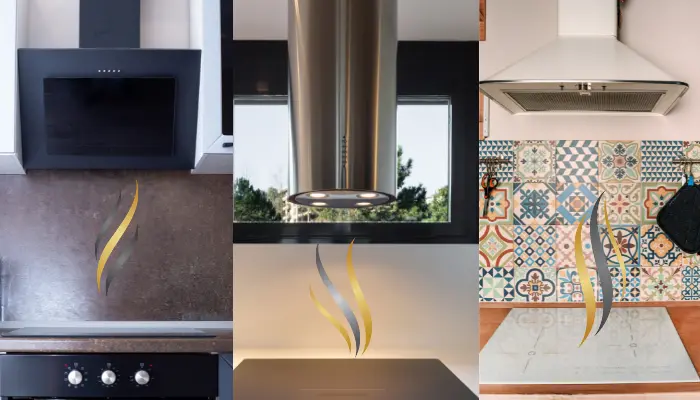Today kitchen chimneys have become an integral part of our life. But when it comes to buying, there is always confusion on how to choose a kitchen chimney? We all know that a kitchen chimney plays an important role in keeping the kitchen clean, especially in the Indian style of cooking where spluttering tadka and tempering curries are cooked daily.
Recommended Articles for You:
Choosing the right chimney for your kitchen is important as they effectively absorb hot gas and pollutants created while cooking. They help to keep your kitchen fresh and protect your kitchen walls and windows from getting dirty from the smoke and fumes. But deciding the right chimney for your kitchen can be a daunting task and needs some research. So, here is the guide that will enable you how to choose a kitchen chimney.
How to choose a kitchen chimney?

There are various parameters that you need to understand and that into consideration before you buy an effective chimney for your kitchen. Let’s have a look at our chimney buying guide.
1. Size of the Chimney Hood
The size of the kitchen chimney is the most important factor to consider as it should fit properly on your kitchen wall above the gas stove. The dimension of the kitchen chimney must be a little bigger than that of your stove. This will allow the smoke to be properly absorbed by the chimney. Moreover, there are two standard sizes of chimneys available that are 60cm and 90 cm. The 60cm chimney works best for 2 burner and 3 burner gas stoves, while 90 cm is preferred for 4 burner and 5 burner gas stoves. Make sure that you choose the most suitable chimney between 60cm and 90cm according to the size of your gas stove.
Kindly note that buying a bigger size chimney will not only cost you more but will also not look good if it is not according to the size of your gas stove.
2. Type of Chimney Filter
There are mainly 3 types of filtration processes used in kitchen chimneys. The 3 types of filters are:
- Cassette/ mesh Filter
- Baffle Filter
- Carbon filter
Cassette Filter
Cassette filters consist of multiple layers of stainless mesh filters. These steel mesh filters can easily trap any solid particles while letting the smoke pass. But the suction capacity of the chimney is reduced due to the blockages in the filter. Therefore, these chimneys require regular cleaning. The best way to clean it is to immerse it in a soapy or detergent water bucket. After that, you can scrub it with a brush or scrubber and then wash it with clean water.
Baffle Filter
These filters are best for the Indian kitchen. These filters are better than aluminum mesh filters. According to research, baffle filters are the best for Indian kitchens and are 30% better than aluminum wire mesh filters. The multiple curves on the baffle filters allow the smoke to pass away easily, but the grease does not pass. Baffle filters are easier to maintain as they require cleaning once in 3 to 4 months. Also, detachable baffle filters are available that can be easily cleaned at home.
Carbon filter
These filters are similar to those in water purifiers and are suitable for duct and ductless chimneys. The charcoal removes the bad odor in the food. While preparing food, the oily and greasy substances stick to the carbon filters. Hence, they need replacement every 6 months. Carbon filters are also good for Indian kitchens. These filters become ineffective after washing, so it is best to replace them.
Out of the three filters, a kitchen chimney with baffle filters is the best for the Indian style of cooking. They are easy and economical to maintain.
3. Construct of the Chimney
Depending on the available space and the construction of the kitchen, 3 types of chimney mounting are available. These kitchen chimney types are-
- Built-in Chimney
- Island Chimney,
- Wall-mounted Chimney
Built-in chimneys are best for compact kitchens as they need very little space. These chimneys are small, fixed on the wall, and united with the kitchen woodwork to save extra space. Island chimneys are designed keeping in mind the modern homes with an open kitchen as it can be kept in the middle of the kitchen. These are hanging chimneys with lots of pipes and ducts required to exhaust the fumes and smoke. As the name suggests, wall-mounted chimneys are mounted on the walls and are best for kitchens where the cooking appliance is against the wall. For the Indian kitchen, a wall-mounted chimney is the best choice.
4. Chimney Ducting
There are ducted and ductless chimneys available. However, for Indian homes, ducted chimneys are preferred since the cooking involves lots of oil and spices. Ducted chimneys absorb smoke and moisture and heal faster. The disadvantage of ducted chimneys is they need some space from where the duct pipe can be allowed out from the kitchen. On the other hand, Ductless chimneys do not require any extra piping work. Also, ductless chimneys look trendier and sleeker.
5. Suction Power of the Chimney
There are chimneys with suction capacities available, which you can choose according to your cooking requirements. For example, suction capacities vary from 400 meters per hour to 1,600 meters per hour. So, if you regularly cook healthy foods with less oil, then a capacity between 700 and 1000 meters per hour. On the contrary, if you cook deep-fried foods, the chimney suction power of 1200 cubic meters per hour is the best for you.
6. Filter Vs Filter-less Chimney
While a baffle filter chimney has the advantage of restricting heavy oil particles from getting inside the chimney, it also requires frequent filter cleaning. Whereas a filter-less chimney does not require frequent cleaning as there is no filter inside. Moreover, all the modern filter-less chimneys come with an auto-clean feature that keeps cleaning. The maintenance cost of an auto-clean chimney is almost zero. This makes a filter-less chimney with an auto-clean feature the best choice for an Indian kitchen.
7. Chimney Maintenance
It is always recommended to buy chimneys from a well-known and reputed brand that provides free after-sales service and installation. For maximum performance, chimneys need cleaning frequently and according to their usage. Before buying a chimney, it is best to research online and consult your family and friends who can give you the best advice. Moreover, check that the brand you are planning to buy provides service in your area for a prompt response.
Conclusion
We hope that our article on how to choose a kitchen chimney has been useful in providing you with all the essential information. This should aid you in deciding on which kitchen chimney to purchase.
A chimney being an essential home appliance, you must make a very informed and wise decision before purchasing one! Ensure that you have done proper research and follow all the parameters suggested in this article so that you don’t purchase what your neighbour suggests is the best one for you! Hence keeping these few things in mind while buying a kitchen chimney will help you make the right decision.
Posts That You May Like
- Auto-Clean Vs Filter-less Chimney: How to Choose The Better One?
- What are the Most Common Chimney Problems and their Solutions?
- How To Clean your kitchen Chimney at home?
- How to decide the Suction Power of the Kitchen Chimney?
- Benefits Of Kitchen Chimney that Make It a Necessity
- 10 Best Kitchen Knife Set in India: Exclusive Collection
- 8 Best Electric Egg Boiler Machines in India: Exclusive Collection
- 10 Best Exhaust Fans for Kitchen: Exclusive Collection & Buying Guide
- The 10 Best Dishwasher Machine for Indian Kitchen – Exclusive Review
- The 10 Best UV Water Purifiers: Review and Buying Guide
- 7 Ideas for Kid’s Room Decor You’ll Love - June 14, 2022
- Expert’s Guide on How to Choose a Kitchen Chimney - May 30, 2022
- The 8 Best Idli Makers in India: Exclusive Review - June 5, 2021
